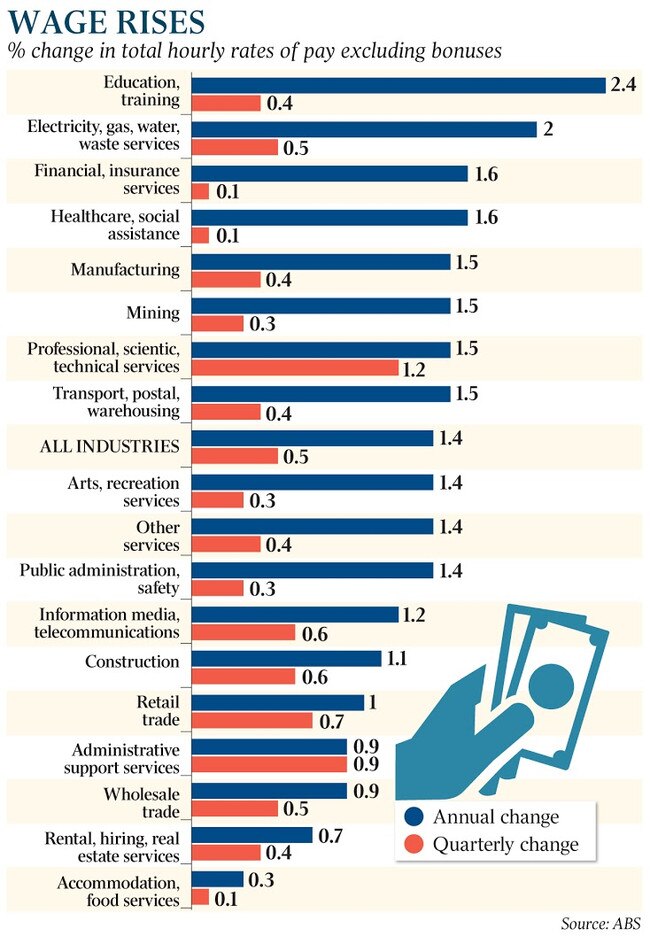Wages lift in December quarter as firms reverse COVID-era pay cuts
Australian workers’ pay grew faster than expected in the December quarter, helped along by the robust post-COVID labour market recovery.

Australian workers’ pay grew faster than expected in the December quarter, as firms reversed temporary COVID-19 pay cuts and a delayed lift in the minimum wage kicked in.
The Australian Bureau of Statistics reported that its wage price index lifted by 0.6 per cent, after climbing by just 0.1 per cent in the three months to September as businesses struggled to adapt to the pandemic.
The annual pace of growth remained at its all-time low of 1.4 per cent, the seasonally adjusted figures showed, rather than sinking to 1.1 per cent as had been the consensus among private sector economists.
More evidence of the anaemic pace of wage growth was seized upon by opponents of the government’s industrial relations reform bill, which passed through the House of Representatives on Tuesday.
ACTU secretary Sally McManus said the proposed changes to the Fair Work Act — which is opposed by the Greens and the opposition and now needs to win support from crossbenchers in the Senate — would “lock in permanent wage suppression because it gives even more power to employers when wage negotiations occur”.
ABS head of prices statistics Michelle Marquardt said the December quarter’s “moderate growth” was explained in part by the reversal of temporary pandemic-era wage cuts.
The phased implementation of the Fair Work Commission annual wage review, which had been delayed from July to the start of November, “also had a small positive impact”, Ms Marquardt said.
Private sector pay, excluding bonuses, climbed by 0.7 per cent in the final three months of the year, and by 1.4 per cent year-on-year.
In contrast, wage freezes for public sector pay drove quarterly growth down to 0.3 per cent, and to 1.6 per cent in through the year terms — the lowest annual increase since the data began in 1998, the ABS said.
By industry, pay in the still heavily COVID-affected accommodation and food services industry recorded the slowest annual pace of growth — 0.5 per cent.
Education and training industry workers enjoyed a 2.4 per cent lift in wages.
Victoria recorded the highest quarterly rise in wages of 0.7 per cent after wage reductions drove pay down by 0.1 per cent in June, which was followed by minimal 0.2 per cent wage growth in September.
The reversal of temporary wage cuts was concentrated in technical and professional services industries, and mainly related to senior staff.
Analysts doubted whether the December quarter figures presaged the start of faster rate of wage growth.
CBA senior economist Kristina Clifton said “it’s more likely to be a one-off ‘pop’ in the quarterly data rather than the start of any meaningful trend higher in wages”.
The Reserve Bank expects wages growth to remain below 2 per cent until the end of 2023.
It has said that a meaningful lift in pay packets will be unlikely until at least the middle of the decade.
More Coverage






To join the conversation, please log in. Don't have an account? Register
Join the conversation, you are commenting as Logout